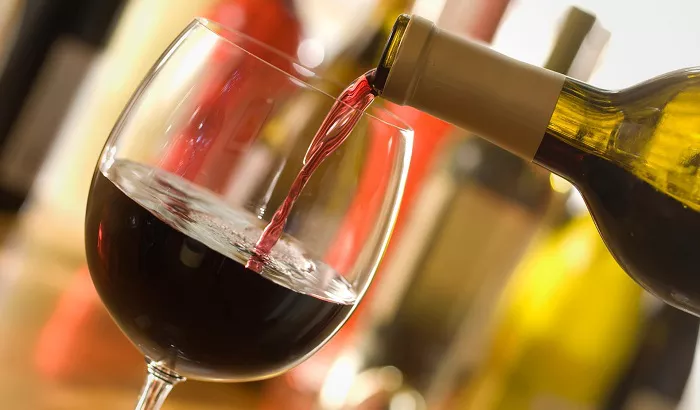The image of a traditional wine harvest, where workers carefully handpick grapes and carry them to a waiting vehicle, may seem timeless. However, in many parts of the world, this scene is becoming increasingly rare. In California, for example, approximately 90% of grapes are harvested by machines, a trend that is expected to grow globally as labor shortages make manual harvesting less viable.
Despite some concerns, advancements in machine technology have ensured that the transition to mechanical harvesting doesn’t spell the end for high-quality wine. In fact, these innovations are helping producers achieve optimal grape quality without the need for large seasonal workforces. Researchers and winemakers around the world have been exploring how these machines are transforming the harvest process, their impact on grape quality, and the efficiency gains for wineries.
The Evolution of Mechanical Harvesters
Mechanical harvesters work by shaking grapevines to dislodge the fruit, which then falls onto a conveyor belt for collection. Early models were known for being rough on vines, often resulting in broken twigs, stems, and berries. This, in turn, could introduce unwanted juice and oxidation issues in the winery, especially in white wines.
Marty Spate, head winemaker at Riboli Family Wines in Fresno, California, recalls the early days of machine harvesting, noting that older machines would cause significant damage to the grapes. However, in 2014, Spate began using new models made by the French company Pellenc, widely regarded for refining the technology. These newer machines are much gentler on the vines, causing fewer broken berries and preventing the unwanted juice leakage that previously led to oxidation issues.
Jonathan Walters, vice president of vineyard and winemaking operations at Brassfield Wine Estate, concurs that today’s machines have greatly improved. New features, such as onboard destemmers and adjustable settings to control the frequency and intensity of the shake, have made the process much more precise. Some machines even incorporate optical sorting, allowing for a more refined selection of grapes before they even reach the winery.
“Now, what we’re receiving is like a luxury product,” says Spate, drawing a comparison to the premium, high-quality fruits found in grocery stores.
Impact on Grapes and Wine Quality
One of the significant advantages of mechanical harvesting is its effect on grape flavor and aroma. Dr. Kristy Sun, an associate professor of enology at California State University, Fresno, highlights that mechanically harvested Sauvignon Blanc grapes often produce higher levels of aromatic compounds, such as thiols, which are responsible for the variety’s distinctive passion fruit aroma. Some studies show that mechanical harvesting can increase these compounds by up to 10 times, potentially enhancing the wine’s characteristic aroma.
However, not all grape varieties are equally suited for mechanical harvesting. Sun notes that delicate grapes like Pinot Noir may be better suited to hand-picking due to their thin skins, which are more prone to damage. Similarly, Federico De Cerchio, owner of Torre Zambra in Abruzzo, Italy, believes that the thick skins of indigenous grapes like Pecorino and Trebbiano may make them more suitable for mechanical harvesting.
Despite these differences, overall, the impact of mechanical harvesters on grape quality has been mostly positive, with some varieties benefiting from the process.
The Vineyard’s Changing Dynamics
While mechanical harvesters have revolutionized the harvesting process, there are still concerns about their impact on vineyard health. Some studies suggest that prolonged use of mechanical harvesters could negatively affect the longevity of vines due to cuts and scars introduced by the machines. Walters believes that vineyards could experience a reduced lifespan, with vines potentially living only 30 years instead of the usual 40 or more, as the machines may contribute to disease spread.
Nonetheless, the advantages of mechanical harvesting in terms of efficiency and cost are clear. Labor shortages are a growing concern across the industry, and machine harvesting offers a practical solution. The cost of machine harvesting ranges between $50 and $100 per acre, while hand-picking can cost $200 to $500 per ton. This cost savings, combined with the reduced need for labor, makes mechanical harvesting a compelling option for many wineries.
Efficiency and Future Outlook
The increasing popularity of mechanical harvesters is driven by labor challenges and the need for greater efficiency in the face of rising costs. As labor becomes scarcer, the ability to harvest quickly—sometimes even at night—has become crucial, especially in regions like California, where wildfires threaten harvests.
Kent Waliser, brand ambassador for Sagemoor Vineyards in Washington State, explains that the latest machine technologies allow for immediate fermentation after harvesting, significantly simplifying the process. Machines can now pick grapes at night, and wineries can process them first thing in the morning, streamlining the logistics and ensuring timely delivery of high-quality fruit.
Despite the upfront cost of the machines, which can run in the hundreds of thousands of dollars, mechanical harvesters are becoming an essential investment for many wineries. As Spate reflects, what was once considered unthinkable—producing high-end wines from machine-harvested grapes—has become a reality.
“We live in a very different world now,” he says, underscoring the significant advancements in mechanical harvesting technology and its ability to produce wines of exceptional quality.
You Might Be Interested In:


